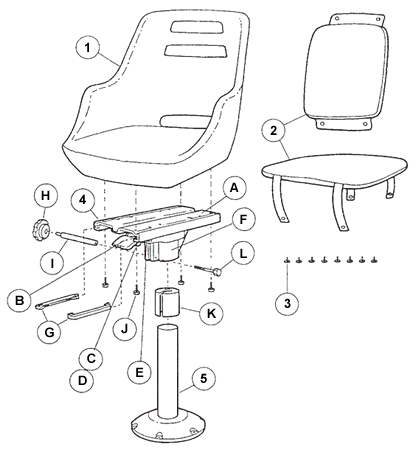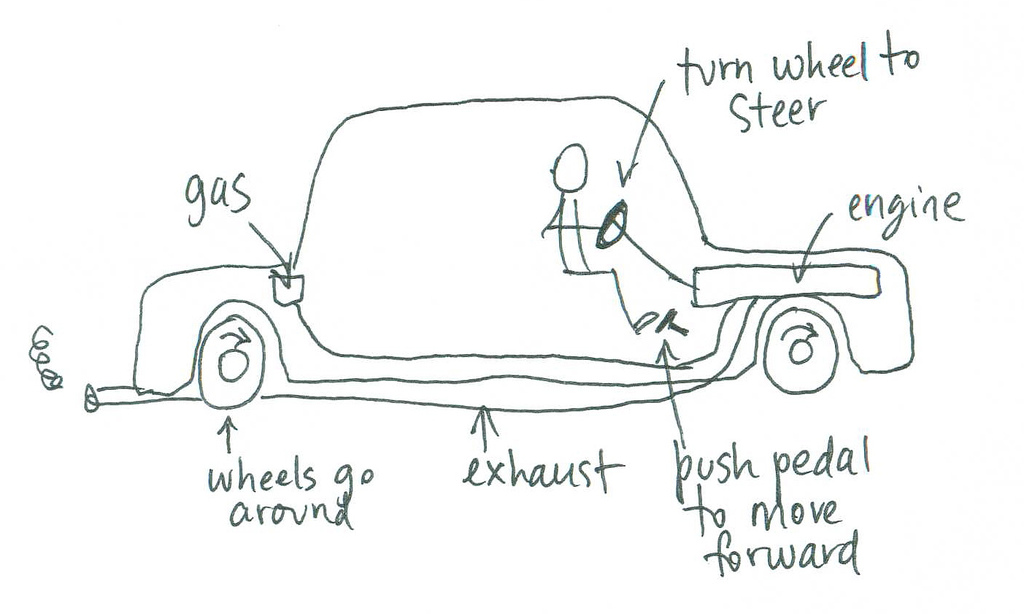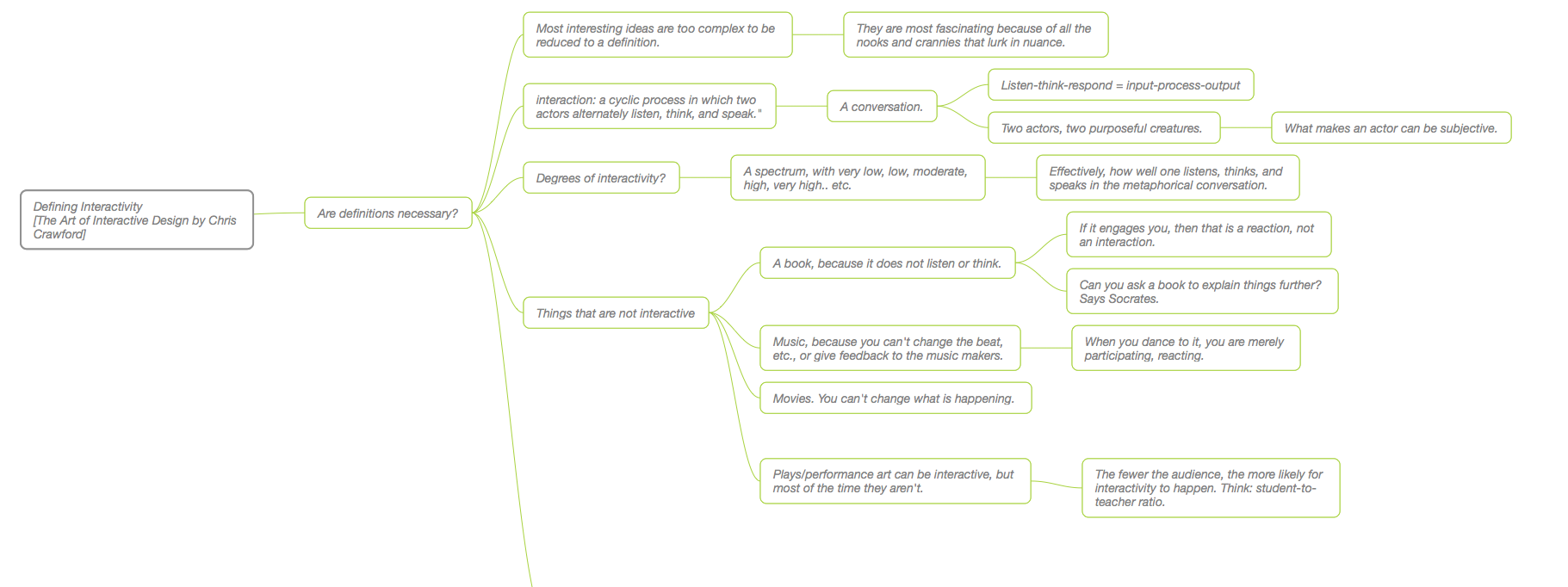What is it?
The standard, stock office chair with a cushion-endowed sitting surface, wheels at the bottom (usually), a low-height backrest, and conveniently-placed hand-rests.
Prior assumptions
It is hardly interacted with. The user can interact with it through a single operation only: sitting.
What is the context in which it is typically used?
Typical context in which it is used: working on a computer, working with non-fixed tools (e.g. notebooks, hand tools) on an adjacent table or desk. Having a meal, or in a communal setting in which people interact (meetings, meals, etc).
How do people actually use it?
The following are typical operations done to a chair: Move the chair towards a general direction. Rotate the seating surface towards another person, a desk, etc. Hang sweater, jacket, or other clothing material on back. Adjust height. Hang a bag on sides or armrests.
How is it being used differently by different people?
Some people use it as a simple seating “device,” others as a surface to place things, hang stuff, or hide luggage underneath. When it is wheel-less, some people use it as a step to reach higher parts of the room, to pick up things from shelves. (In, er, rare cases, they use it recreationally for play.)
What appears to be the most difficult?
Getting things that have fallen on the ground; it is a challenge attempting to steer a moving chair properly to get a pencil or so from underneath. Getting it in the right orientation and height. Trying to move the seating surface all the while the wheels move about by themselves.
What appears to be the easiest?
Siting on it, unsurprisingly. Leaning forward and backwards.
What takes the most time?
Finding the right position and/or orientation. If the chair is wheel-less, then this is even more difficult. Hanging stuff takes more than it should.
What takes the least time?
Again, leaning backwards and forwards.
How long does the whole transaction take?
To sit: 1 to 2 seconds. Hanging and placing stuff: 2 seconds. Adjusting position and orientation: 1 to 5 seconds. Leaning forward or back: less than 1 second. Standing up: less than 1 second.
Critique, following Crawford and Norman
Norman’s main thesis is that the design should show the answers to the problem it is attempting to resolve, and a chair that is conventionally-designed certainly does that for the main problem of sitting: the seating surface visibly affords to have a person sit on it. However, it does not afford that exclusively, nor do the other parts of the chair (its backrest, for instance, affords the placement of clothing materials). This is not a bad thing, but it calls for a revision in its essential design philosophy: emergent usage patterns requires that proper mapping is established between the new interaction operations with their controls and outcome. For instance, the backrest should no longer accommodate the process of leaning backwards exclusively, and should also be visibly mapped to the process of placing suspended materials.
Photo credit: http://www.toddusa.com/products.aspx?id=54



